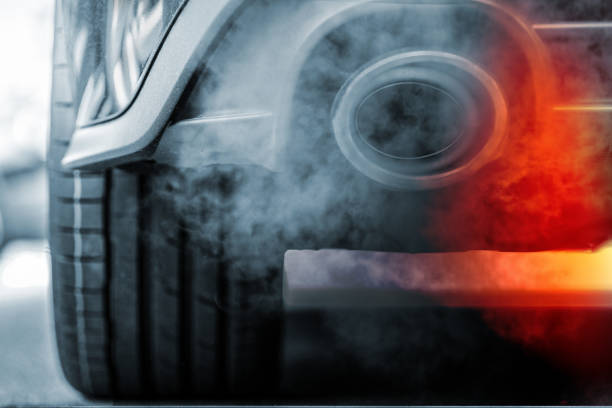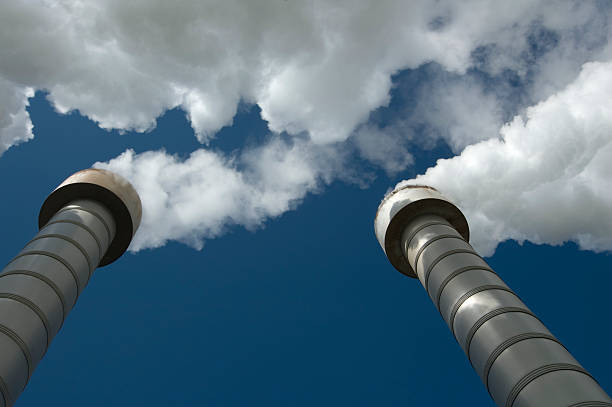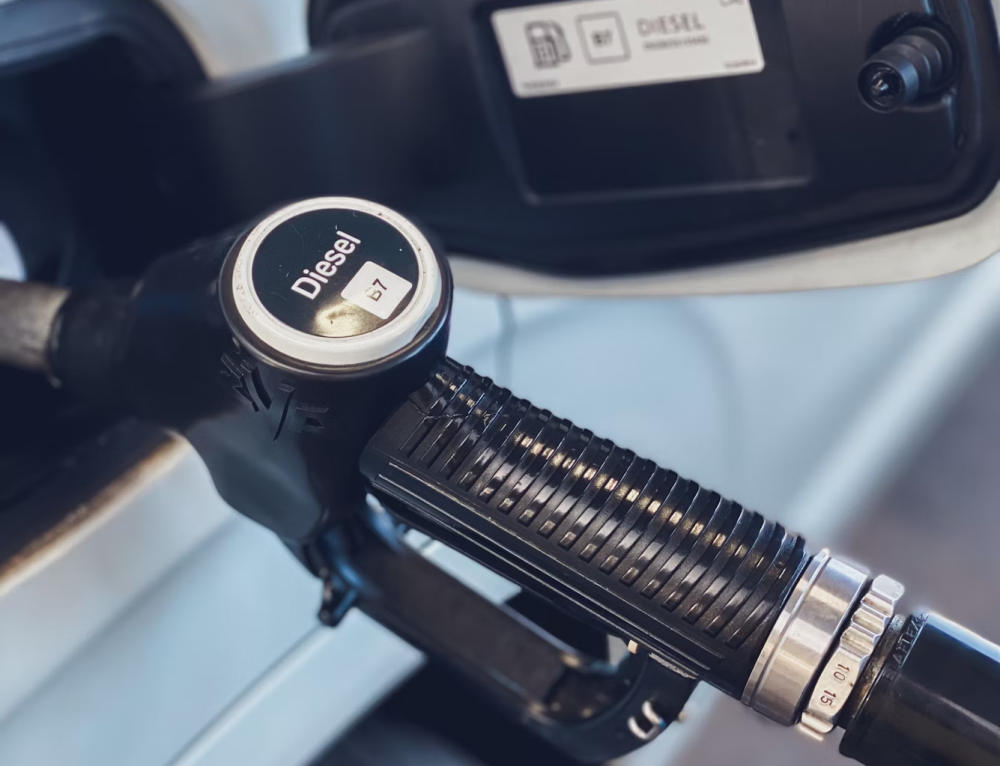Diesel engines… they power the world, right? Trucks, construction equipment, generators – the heavy lifters. But, let’s be honest, that power used to come at a serious cost. We’re talking about clouds of nasty stuff pouring out of exhaust pipes, contributing to some major air pollution and posing a threat to human health. That’s where diesel exhaust fluid comes in.
By reducing harmful nitrogen oxide emissions, it plays a key role in making diesel engines cleaner and more environmentally friendly. And honestly, nobody wants to be that guy (or gal, or company) spewing harmful emissions into the air. It’s bad for our planet and, bottom line, bad for us.
Thankfully, there’s a solution, and it’s not magic (though it kind of feels like it!). It’s called Diesel Exhaust Fluid, or DEF. This article’s going to demystify Diesel Exhaust Fluid and a related process called selective catalytic reduction, explain how they work together within something called SCR systems in diesel vehicles, why they’re crucially important for meeting today’s environmental standards, and what you, as a diesel owner or fleet operator, need to know.
The Problem: Diesel Emissions and Their Impact

So, how do diesel engines work, and, more importantly, why do they get a bad rap sometimes? Well, it all comes down to the way they burn fuel. Unlike gasoline engines that use spark plugs, diesel engines rely on super-high compression. They squeeze air until it’s incredibly hot, and then they inject the fuel. This makes them powerful and fuel-efficient, which is great for hauling tons of items across the United States.
But – and this is a big “but” – this diesel combustion process also creates some byproducts that are, shall we say, less than ideal. That’s where Diesel Exhaust Fluid comes in, helping to reduce harmful emissions and make diesel engines cleaner.
The main culprit? Nitrogen oxide. Actually, it is a collection of different, harmful nitrogen oxide emissions. We’re not going to get bogged down in chemistry class here, but think of NOx emissions as a group of gases that are released from the exhaust system. Diesel exhaust fluid plays a role in reducing these harmful emissions by breaking down the nitrogen oxides into harmless nitrogen and water vapor. These nitrogen oxides aren’t just unpleasant; they’re actively harmful. Environmentally speaking, they contribute to things like acid rain and smog – those hazy, ugly days that make you want to stay inside. And, perhaps even more importantly, from a human health perspective, NOx can seriously irritate your lungs and worsen respiratory problems. Not good.
That’s where the Environmental Protection Agency (EPA) comes in. Here in the United States, the EPA has laid down the law with EPA regulations. These strict environmental standards dictate just how much NOx motor vehicles are allowed to emit. And these regulations aren’t just suggestions; they’re serious business, designed to combat some pressing environmental problems and tackle air pollution head-on.
Selective Catalytic Reduction (SCR) Technology
So, we’ve established that NOx emissions are a problem. The good news? There’s a pretty ingenious solution, and it’s called Selective Catalytic Reduction, or SCR, for those times you just can’t be bothered saying the whole phrase. SCR technology, which often utilizes diesel exhaust fluid (DEF), is the go-to method for slashing those harmful nitrogen oxide emissions from modern diesel engines. It’s become absolutely essential for meeting those tough EPA regulations we talked about. It’s the key.
Think of an SCR system as a sophisticated after-treatment system. It’s not part of the engine itself, but rather, something that works on the exhaust gas after it leaves the diesel engine. There are a few key elements of the selective catalytic reduction process that we should touch on. The star of the show is the SCR catalyst, a special component that lives within the exhaust system.
The other major player is the DEF delivery system, which, as the name implies, precisely injects Diesel Exhaust Fluid (DEF) – that magic potion we mentioned earlier – into the exhaust stream. There’s a common, alternative method, exhaust gas recirculation, but the benefits of SCR far outweigh the benefits of that system.

Here’s the basic, no-PhD-required rundown of how it works: the Diesel Exhaust Fluid, once it’s introduced into the hot exhaust gas, undergoes a chemical reaction. The heat transforms it into ammonia. This ammonia then reacts with the NOx in the presence of that SCR catalyst. And poof (well, not literally “poof,” it’s science, not magic) – the harmful NOx is converted into two completely harmless substances: nitrogen gas and water vapor. Both of these are natural components of the air we breathe, so it’s a win-win.
Diesel engine manufacturers everywhere depend on SCR technology to keep modern diesel vehicles compliant with emission standards.
Diesel Exhaust Fluid (DEF): Composition and Properties
Alright, let’s talk about this Diesel Exhaust Fluid (DEF) stuff. First things first: DEF is not a fuel additive. Repeat: not a fuel additive. It doesn’t go in your fuel tank. It’s a completely separate fluid with its own dedicated tank, often located near the fuel tank (but, again, separate).
This is important, because you really don’t want to mix the two! Adding Diesel Exhaust Fluid directly to the fuel could create some serious mechanical malfunctions.
So, what is it? DEF is surprisingly simple. It’s a precisely engineered solution of pure automotive grade urea and deionized water. We’re talking about a specific concentration, usually around 32.5% urea. This isn’t the same urea you might find in, say, fertilizer. It’s a much higher purity level, designed specifically for use in SCR systems.
Because consistency is key for these systems to work correctly, there are strict industry standards. The International Organization for Standardization has a standard called ISO 22241. These requirements ensure that the Diesel Exhaust Fluid you’re using will perform as expected and won’t damage your vehicle’s SCR system.
The German Association of the Automotive Industry (VDA) is one of the organizations that oversee these standards. They own the registered trademark “Blue DEF,” so you’re likely to see that on Diesel Exhaust Fluid products.
Handling DEF is pretty straightforward. It’s non-toxic, but it’s a good idea to avoid getting it on your skin or in your eyes (basic safety stuff, really). Store it in a cool, dry place, away from direct sunlight, to maintain its quality. And, no, sunlight won’t turn your DEF into a frog, but better safe than sorry. That said, Diesel Exhaust Fluid is made of natural components of the air.
How Does Diesel Exhaust Fluid Work Within the SCR System?

Okay, we’ve talked about SCR technology and what Diesel Exhaust Fluid is. Now, let’s connect the dots and see how they work together to make those nasty NOx emissions disappear. This is where the real magic happens (though, again, it’s science, not actual magic).
Think of it as a carefully choreographed dance, happening within your vehicle’s exhaust system. Here’s the step-by-step:
- Storage: Diesel Exhaust Fluid hangs out in its own dedicated DEF tank, separate from the diesel fuel. This tank often has a blue filler cap, just to make things super clear. You might even find that it’s part of the diesel fuel gauge.
- Injection: When your engine’s running, a precise amount of Diesel Exhaust Fluid is sprayed into the exhaust stream before it reaches the SCR catalyst. This isn’t a random squirt; it’s a carefully controlled injection, managed by the vehicle’s computer.
- Transformation: The exhaust gas is hot. I mean, really hot. This hot exhaust gas hits the Diesel Exhaust Fluid, and the heat causes the urea in the DEF to break down and form ammonia.
- The reaction: This ammonia, along with the existing NOx in the exhaust gas, flows into the SCR catalyst. Inside the catalyst, a chemical reaction takes place. The ammonia reacts with the NOx, acting as a NOx reduction agent.
- Clean air: The result of this reaction? Nitrogen gas and water vapor. Both of these are harmless – they’re actually natural components of the air we breathe. So, what was once a harmful pollutant is now, essentially, just air and a little bit of water.
For optimum SCR performance, a few things need to be juust right: the temperature of the exhaust gas, the quality of the Diesel Exhaust Fluid, and the overall health of the SCR system. That’s why regular maintenance is so important. Sensors within the exhaust system constantly monitor NOx levels and adjust the Diesel Exhaust Fluid injection rate to ensure the reaction is as efficient as possible.
Also – and this is more of a side note – many modern diesel vehicles have something called a diesel particulate filter, or DPF. This filter is also inside the exhaust system, and deals with soot and other particles. Sometimes the DPF and the SCR system are integrated, but they deal with different types of pollution.
Phoenix Diesel Repair and DEF Services
So, all this talk about SCR systems, Diesel Exhaust Fluid, and potential issues might have you thinking, “Who can I trust to keep my diesel running smoothly?” Well, that’s where we, Phoenix Diesel Repair, come in. We’re not just another repair shop; we’re experts in diesel engine maintenance, and that includes everything related to Diesel Exhaust Fluid and SCR technology.
We offer comprehensive services to keep your system in top shape: DEF diagnostics to pinpoint any problems, SCR system repair and maintenance to fix those problems, and, of course, Diesel Exhaust Fluid refills to keep you topped up.
We deal in the latest tech for diesel. And, to give credit where credit is due, although we do some limited work on major appliances, portable products, and personal care items, SCR work is of far, far greater importance.
Think of us as your partners in keeping your diesel vehicle compliant and efficient. Need a Diesel Exhaust Fluid check-up? Got a warning light that’s got you worried? Give Phoenix Diesel Repair a call at 602-888-2544 or visit our website at phoenixdieselrepair.com. We’re here to help!
Conclusion
So, there you have it. Diesel Exhaust Fluid (DEF) might seem like a small detail in the grand scheme of things, but it plays a huge role in reducing harmful emissions and helping us all breathe a little easier. And, looking ahead, DEF and SCR technology will continue to be essential for meeting ever-stricter environmental standards for diesel vehicles, and cutting back on carbon dioxide.
Frequently Asked Questions
How does Diesel Exhaust Fluid (DEF) work?
DEF is injected into the hot exhaust gases after they leave the engine. The heat causes the DEF to break down into ammonia, which reacts with the nitrogen oxides (NOx) in the exhaust. This reaction converts the NOx into harmless nitrogen gas and water vapor, which are naturally present in the air we breathe.
What is Selective Catalytic Reduction (SCR)?
SCR is a technology used to reduce NOx emissions in modern diesel engines. It uses a catalyst and DEF to convert harmful nitrogen oxides into nitrogen and water vapor, making diesel engines cleaner and more environmentally friendly.
Why is DEF important for diesel engines?
DEF plays a critical role in reducing NOx emissions from diesel engines, helping vehicles meet stringent environmental standards set by the Environmental Protection Agency (EPA). It helps make diesel engines more eco-friendly while improving air quality and human health.
Can I put Diesel Exhaust Fluid in my fuel tank?
No, DEF is not a fuel additive and should never be mixed with diesel fuel. It is stored in a separate tank, usually located near the fuel tank. Adding DEF to the fuel tank can cause serious mechanical problems.
How do I maintain my DEF system?
Regular maintenance of the SCR system is crucial for optimal performance. This includes ensuring that the DEF tank is always filled, checking for warning lights and having the SCR system, including sensors and the catalyst, inspected periodically.





